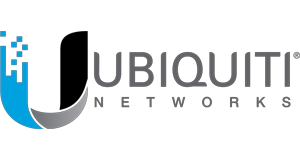The invention of the wheel transformed how people travelled and transported goods. Traveling further and faster became possible with wheels – and with humans operating them.
Likewise, artificial intelligence (AI) today is changing our lives. Machine learning (ML) algorithms enable voice recognition, fraud detection, and personalised product recommendations. Autonomous systems are now used for self-driving cars, delivery drones, and surgical robots.
They are all amazing, but they cannot happen without people – to design them, oversee their operations, and intervene in case of errors or unexpected situations.
Why Human-AI Collaboration is Important
For non-profits to achieve optimal efficiency and productivity, collaboration is necessary to:
- Enhance the capabilities and performance of both humans and AI systems
- Leverage both their strengths: human creativity, intuition, and empathy, and AI speed, accuracy, and scalability
- Address each other’s challenges and limitations (e.g., human bias and fatigue, AI’s rigidity and lack of common-sense reasoning)
Working together is important because humans can achieve more when they harness AI than they could alone, while AI can learn from inputs, feedback, and direction from humans.
Key Principles for Using AI
To achieve the balance between AI use and the human touch, we first need to learn these principles:
Principle #1: AI should augment human intelligence.
Some call AI “augmented intelligence” for a reason: Technology should add to human capabilities, not replace them. Humans and AI have different skill sets that can complement each other. AI may be fast, more accurate, and consistently rational, but humans have capacity for intuition, emotion, and culturally sensitivity.
Principle #2: AI use should be human-centered.
All technologies should serve human needs and interests, not the other way around. AI should help humanity and enhance human lives. To implement AI in a human-centered way, your non-profit should prioritise transparency, accountability, and data privacy, ensuring that the technology serves the best interests of your beneficiaries.
Principle #3: AI should be used ethically and responsibly.
Artificial intelligence should never cause harm or promote prejudice or bias. AI should be used in ways that prioritise fairness, accountability, transparency, and the protection of individuals’ rights. Moreover:
- AI tools should not discriminate against or disadvantage certain groups. Any such bias in AI algorithms must be addressed.
- Decision-making processes should be transparent. AI development methods must be open to scrutiny, to maintain accountability and foster public trust.
- Organisations must handle data responsibly, safeguarding privacy and security and preventing misuse or unauthorized access.

Working Together: Humans & AI for Fundraising, Productivity, & Mission Impact
Your non-profit can use both AI skills and human strengths in your fundraising activities:
| HUMAN ROLES | AI ROLES |
| Set fundraising goals and objectivesDevelop a fundraising strategyIdentify and research potential donorsBuild relationships with donorsCreate and execute fundraising campaignsTrack and analyse fundraising results | Analyse donor data to identify patternsSegment donors based on past giving, interests, and demographicsPersonalise fundraising messages to donorsAutomate chatbots to answer FAQsIdentify and qualify new donor leadsAutomate email marketing, social media posting, and donor relationship managementGenerate fundraising insights and recommendations |
Humans and AI can also collaborate in boosting your productivity, such as in the following examples:
| PROCESS | HUMAN ROLES | AI ROLES |
| Data Analysis for Fundraising | Defining fundraising goals, planning strategies, and identification of target donor groups | Analysis of donor data to predict giving patterns, fundraising strategy ideas and recommendations, and automating personalised donor outreach |
| Volunteer Management | Engaging with volunteers, understanding their skills and preferences, and planning volunteer activities | Assistance in scheduling, matching volunteers with suitable tasks, and tracking their contributions, ensuring efficient resource allocation |
| Donor Engagement | Content development, creating campaigns, and engaging with donors personally | Donor segmentation (based on preferences), email marketing automation, and providing real-time data analytics to fine-tune engagement strategies |
| Client Services | Social workers or counsellors can provide one-on-one support to clients. | Immediate responses to frequently asked questions and guide clients to appropriate resources |
| Program Evaluation | Program managers can set goals and design intervention strategies | Collection and analysis of program data to assess outcomes, providing insights for program improvement |
| Content Moderation | Reviewing and filtering of user-generated content for compliance with guidelines | Pre-screening content for potential violations, allowing human moderators to focus on more complex cases |
| Grant Proposal Evaluation | Expert evaluation of grant proposals for funding | Initial screening of proposals based on specific criteria |
| Resource Allocation | Making strategic decisions about resource allocation | Giving data-driven insights on where resources are most needed |
In addition, here are mission-specific examples of human-AI collaboration:
| MISSION | HUMAN ROLES | AI ROLES |
| Healthcare Outreach | Medical professionals can provide direct care and support to patients | Chatbots can assist in patient education, appointment scheduling, and follow-up care |
| Mental Health Support & Services | Mental health professionals can provide therapy, support, and counselling | AI-driven apps can offer cognitive behavioural therapy exercises, mood tracking, and personalised coping strategies |
| Elderly Care | Caregivers can provide companionship and assistance to the elderly | AI-powered robotics can help with daily tasks, monitor health parameters, and provide medication reminders |
| Youth Empowerment | Youth workers can engage with young people to provide guidance and mentorship | AI can assess youth needs and match them with suitable programs and resources |
| Education Access | Educators can design curriculums and do in-person teaching and mentorship | e-learning platforms can provide personalised learning experiences and educational resources, and adapt content and pacing based on individual learner performance |
| Homelessness Support | Workers can offer direct aid and guidance to persons experiencing homelessness | AI can analyse data to identify homelessness patterns and develop strategies to address root causes |
| Emergency & Disaster Response | Teams can assess on-the-ground situations and provide immediate assistance | AI can process real-time data to identify affected areas, predict disaster patterns, allocate resources, improve early warning systems, and optimise emergency response strategies |
| Environmental Conservation | Conservation experts can lead field operations and habitat restoration activities | AI tools can analyse environmental data to identify critical conservation areas, predict threats, and optimise resource allocation |
| Agricultural Sustainability | Farmers and agricultural experts can implement sustainable farming practices | AI tools can recommend strategies for optimising crop yields while minimising environmental impact |
| Food Security | Food distribution volunteers can provide meals to vulnerable populations | AI algorithms can analyse food demand patterns, optimise supply chains, and reduce food wastage |
Humans & AI: On to the Next Wave
Just as wheels never displaced human feet, AI should not kick humans out of the workplace. AI capabilities and human strengths should be used in balanced ways.
You must responsibly harness augmented intelligence in human-centred ways. It’s a matter of knowing what you need, what AI can offer, and utilising AI to build upon what humans can do.
One last thing: New AI tools are emerging, so we made a free eBook called How to Prepare for the Next Wave of Artificial Intelligence – download it now and learn to ride the next AI wave.







